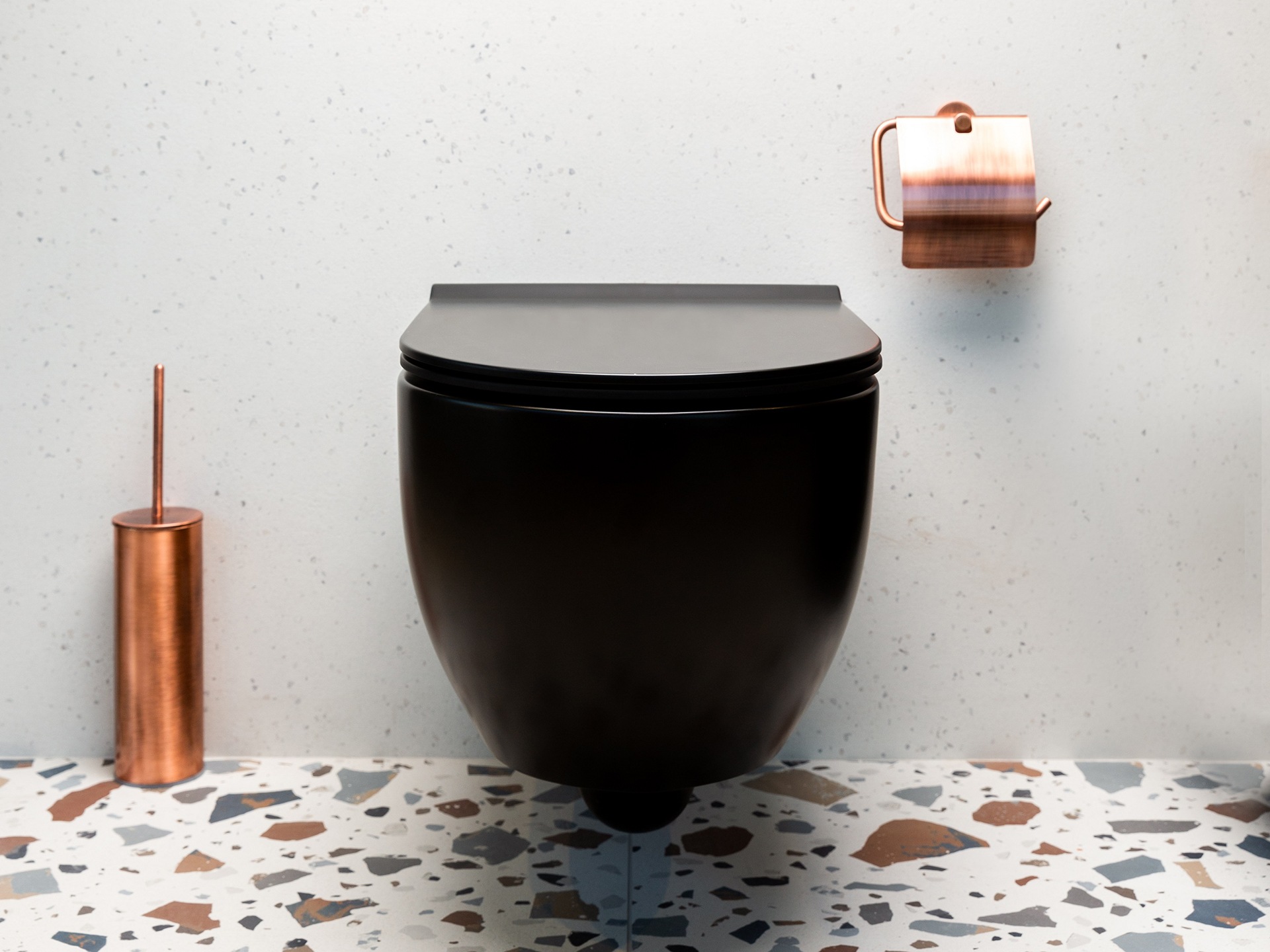What is a back-to-wall toilet? Everything you need to know
Everything you need to know about back-to-wall and wall-hung toilets and how to install them
The traditional toilet we are most familiar with is called a close-coupled toilet. On a close-coupled toilet, the cistern – tank containing the water to flush the toilet – sits behind the toilet, attached to the wall, with the toilet itself set forward of that.
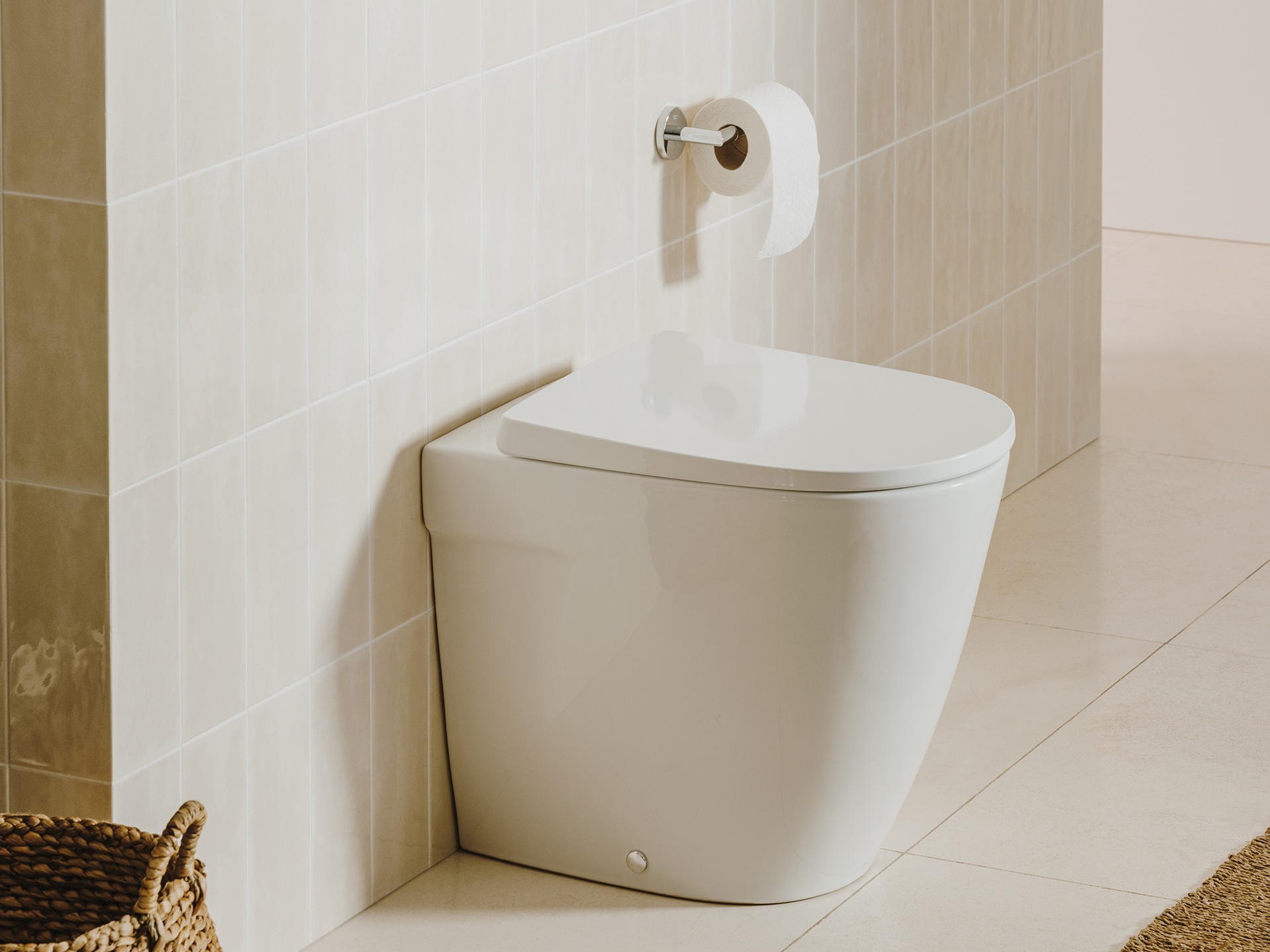
Image credit: Roca, Ona collection
On the other hand, back-to-wall toilets do what it says on the pan (sorry!): ie they have their back to the wall. The back of the toilet is fixed directly to the wall and the cistern is housed within the wall, behind an access panel.
This saves lots of space: something that’s really useful in Britain’s small homes, where the average bathroom is just 2m2.
Hiding the cistern in the wall is easiest with stud walls, but you can still use a back-to-wall toilet against a solid wall.
In this case you just need to fix a cistern furniture unit (see picture below) to the wall to house the cistern and then fix the toilet to the front of that.
Unlike wall-hung toilets, back-to-wall toilets sit on the floor.
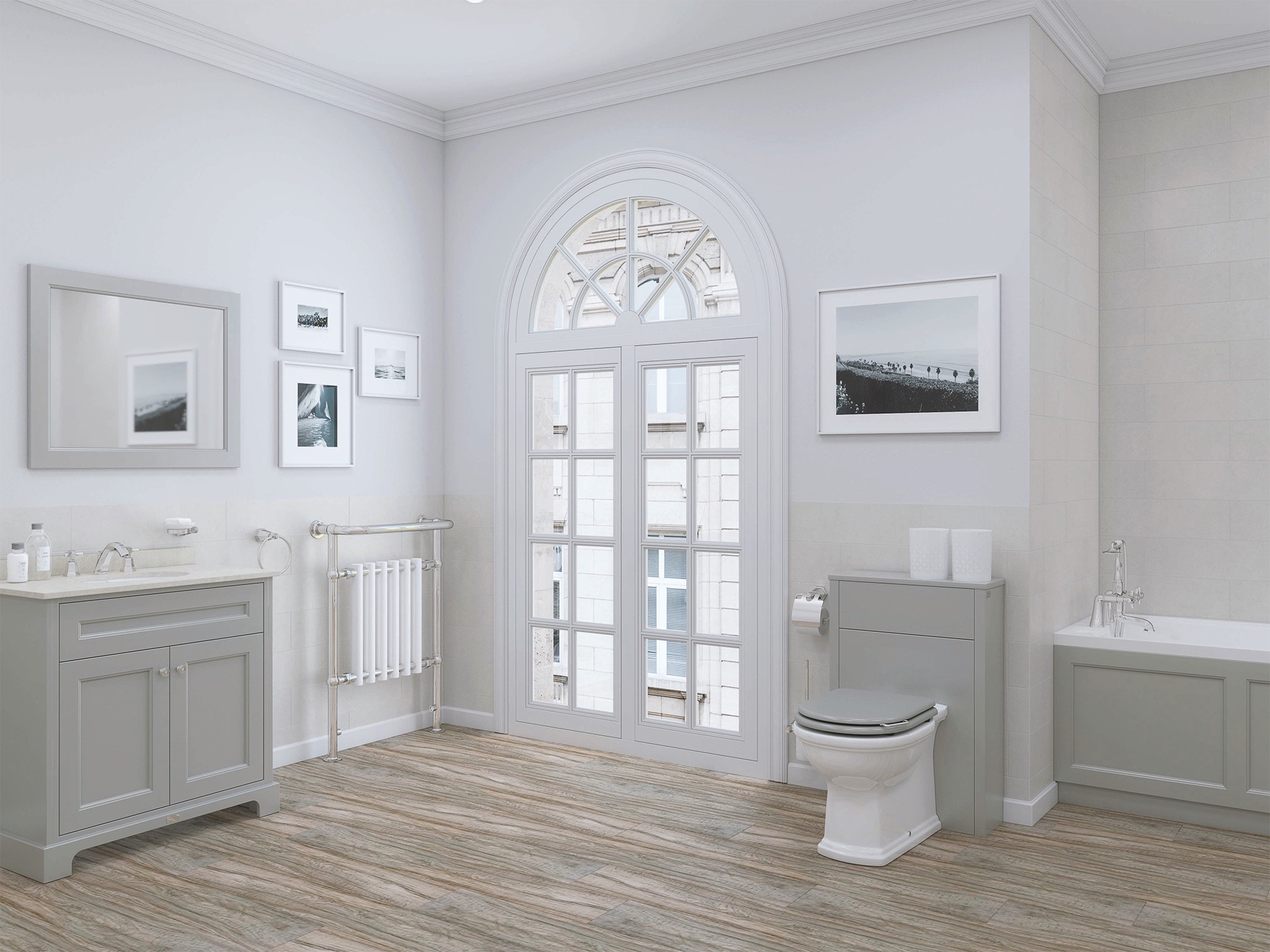
Image credit: RAK ceramics
What’s the advantage?
People like back-to-wall toilets because the cistern and pipework are hidden away in the wall, which creates a more streamlined and minimalist contemporary look.
If the cistern is inside the wall, then a back-to-wall toilet will also save space compared to a close-coupled toilet. To save even more space in, say, a small bathroom, you can choose a compact model too.
With all the pipework hidden away, back-to-wall toilets are easier to clean as well. And, bonus, much quieter when you flush.
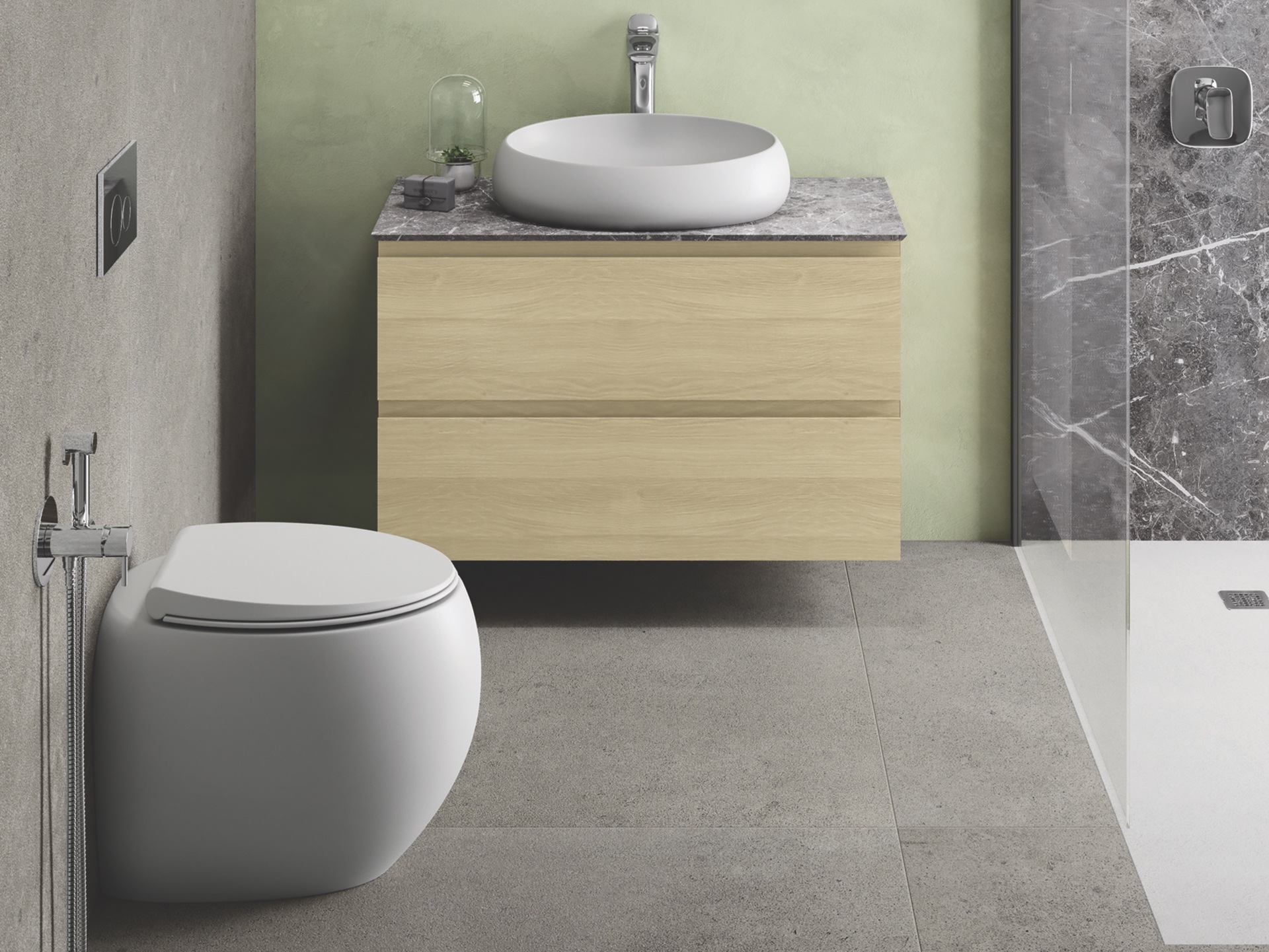
Image credit: RAK ceramics, from the RAK Cloud collection
Disadvantages
Back-to-wall toilets can be harder to install than ordinary toilets. They can also be harder to repair and maintain because all the moving parts and the soil pipe are behind the stud wall (or in the furniture unit).
If you are putting a concealed cistern into a wall, you must put it behind a removable panel that can be taken out when repairs are needed.
But plumbers are becoming increasingly familiar with these new designs, and, as long as you take care when installing the cistern and wall panel to leave room to manoeuvre, repairs shouldn’t be a problem.
How to install
Back-to-wall toilet cisterns are shallow in depth so they can fit into a stud wall. You need to have a wall that is deep enough to hold the cistern and, when choosing the cistern, it is helpful to know how far apart the studs in your wall are.
Ideally, you want one that will fit between two studs.
When the wall is finished with, say, ceiling-to-floor tile-backer board, a removable panel is cut out in front of the cistern, in case you need to access it, and the flush button is set into the wall.
These cisterns are designed with all the valves on the inside so all the servicing can be done through a hole in the front of the unit.
Furniture unit
If you can’t put the cistern inside the wall – say, because it’s a solid wall – you can use a back-to-wall cistern furniture unit to contain it.
This is basically a boxed in section that sits behind the toilet to contain the cistern and pipework. This will give your toilet a neat, minimalist look – but means you won’t be saving as much space.
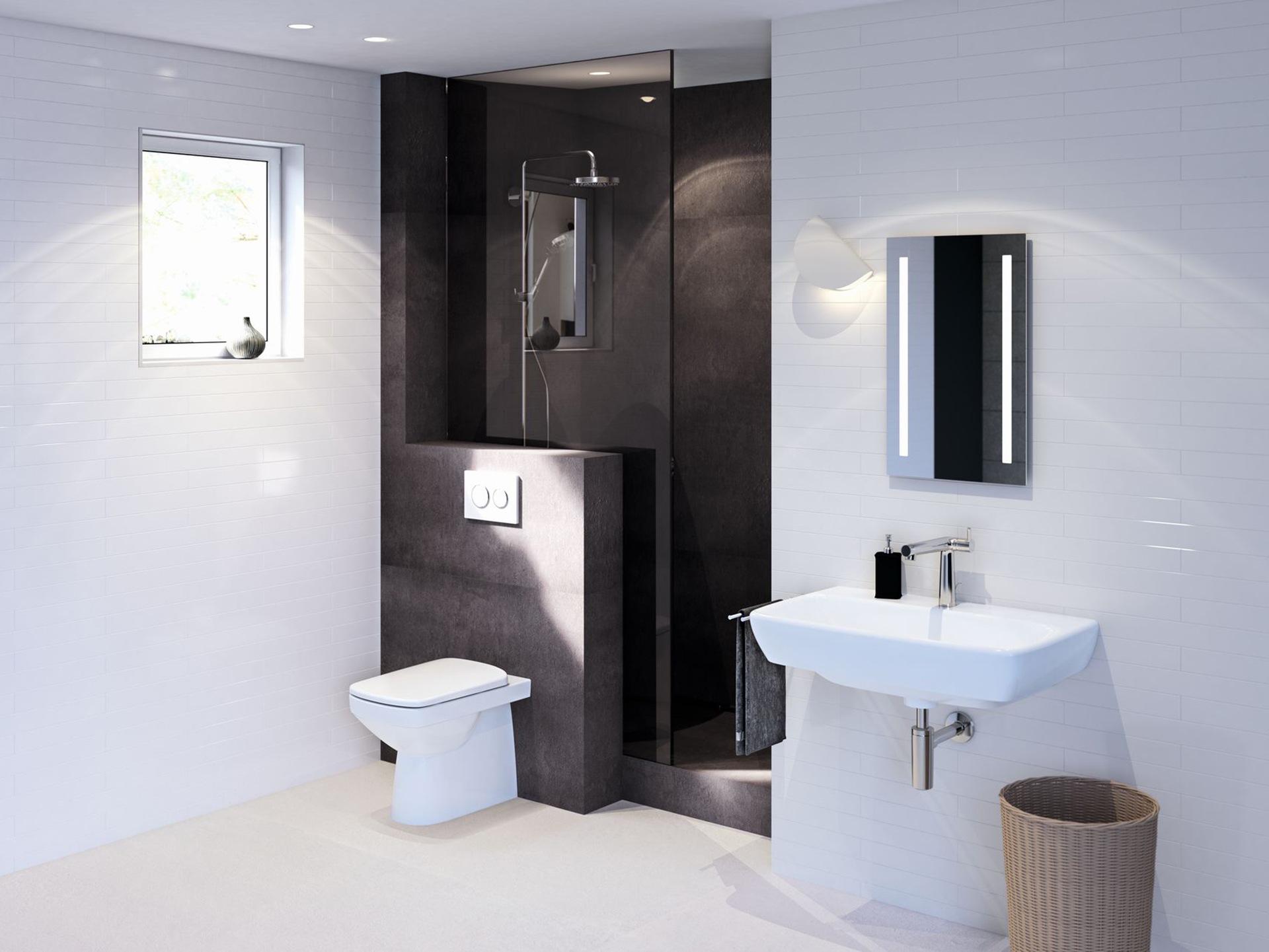
Image credit: Geberit
Wall-hung toilet
If you want to take the sleek minimal look one stage further, you could opt for a wall-hung toilet.
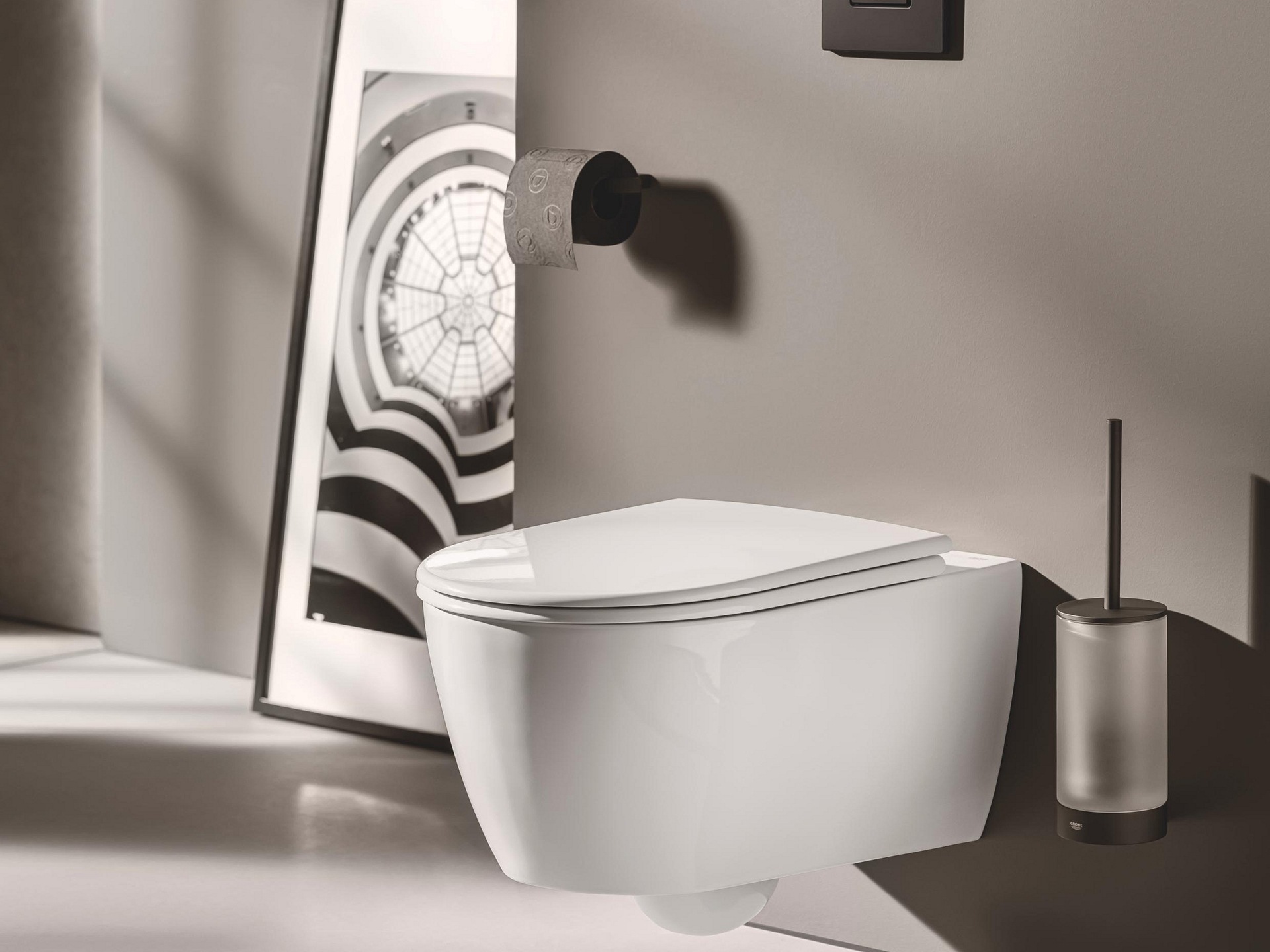
Image credit: Grohe, Essence pan
Advantages
Wall-hung toilets have the advantage of allowing you to set the height of the toilet bowl to one that you find comfortable.
Again, they are an easy-to-clean choice because there is less surface area and no pipework to clean. Plus, you can easily clean underneath a wall-hung toilet.
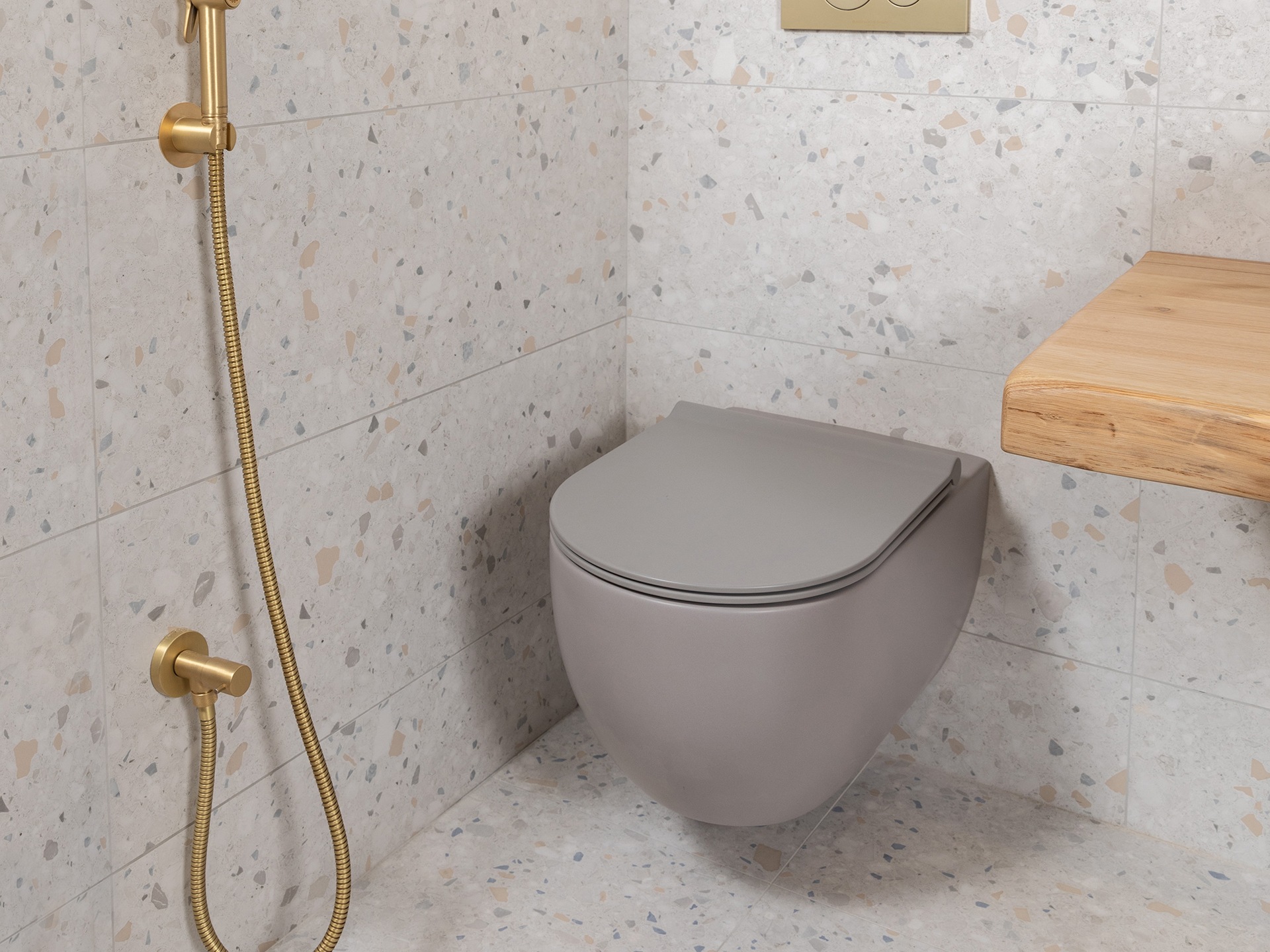
Image credit: Real Stone, Tile & Bathroom
The gap beneath the toilet and the floor gives an illusion of space.
And because the cistern is again held in the wall, these are also a space-saving option, ideal for small bathrooms.
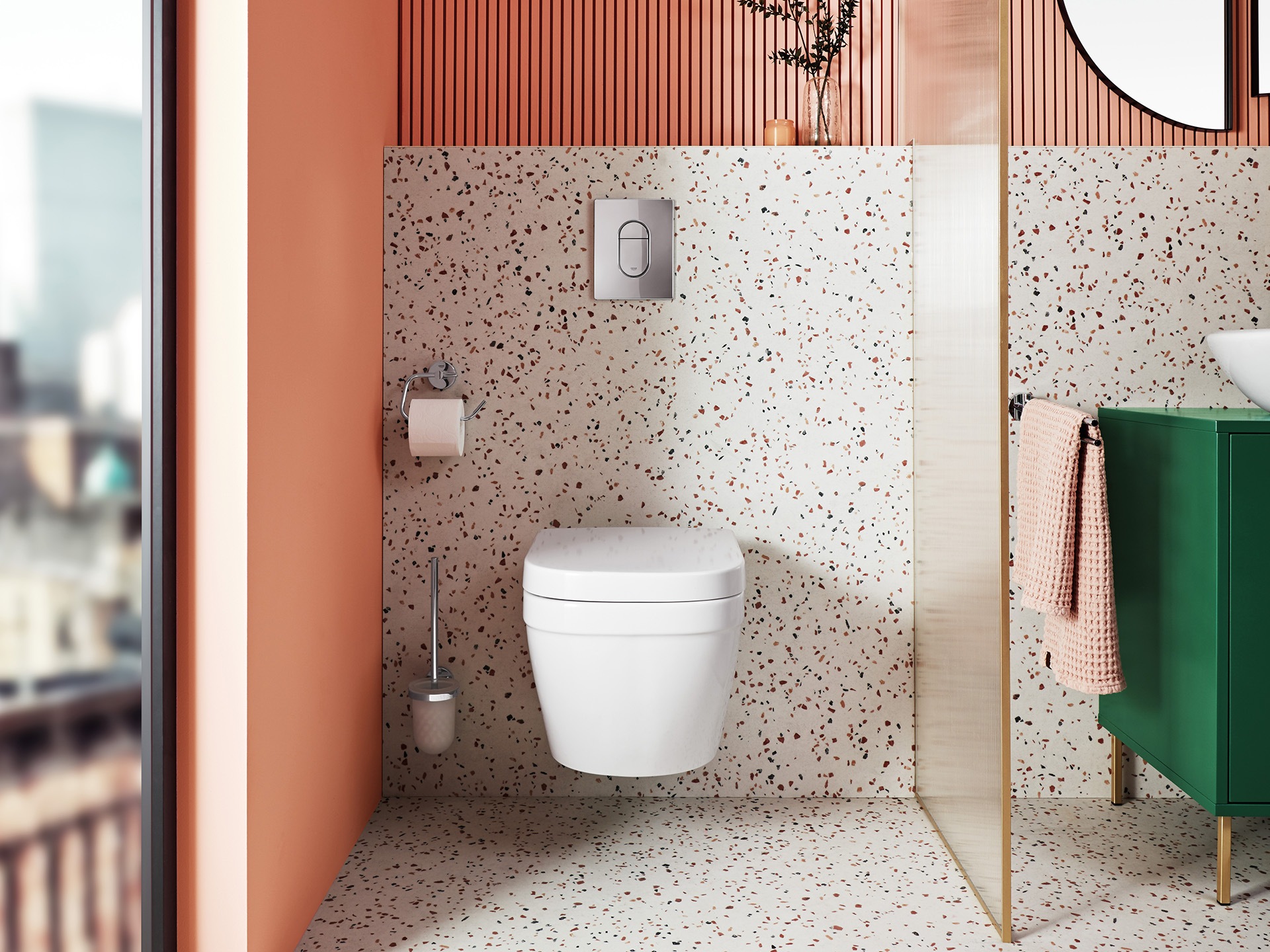
Image credit: Grohe
Installation
Wall-hung toilets are held in the wall by a toilet frame. This is a rectangular metal frame that is fixed to the floor and wall and supports the weight of the cistern and toilet.
The wall is finished off with board in the same way as for back-to-wall toilets, and again an access panel is required.
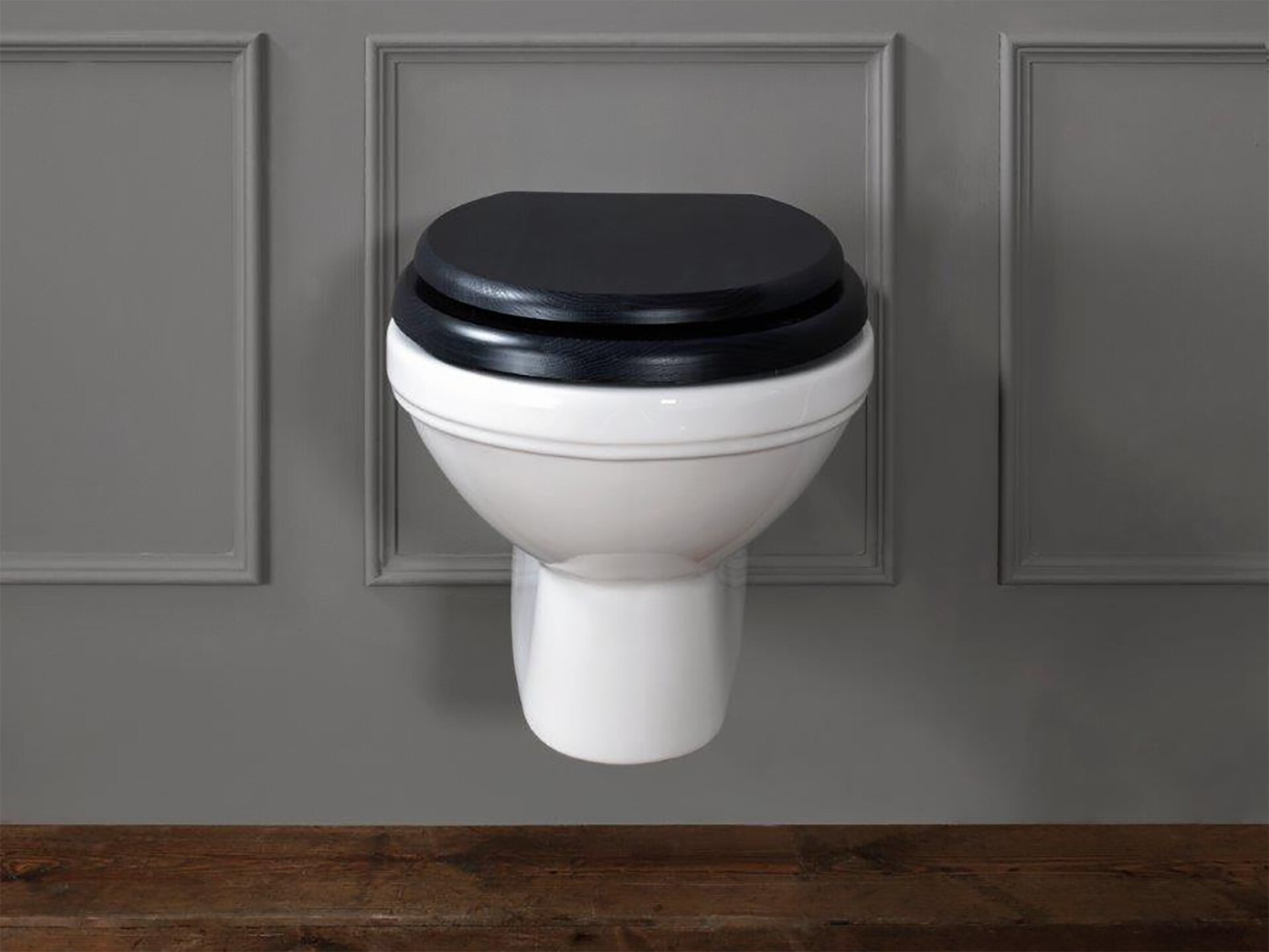
Image credit: Silverdale Bathrooms, Empire pan
A properly installed wall-hung toilet should be able to cope with a weight of 200-400kg depending on the model.
That’s 30 to 60 stone: so that should be fine for most people.
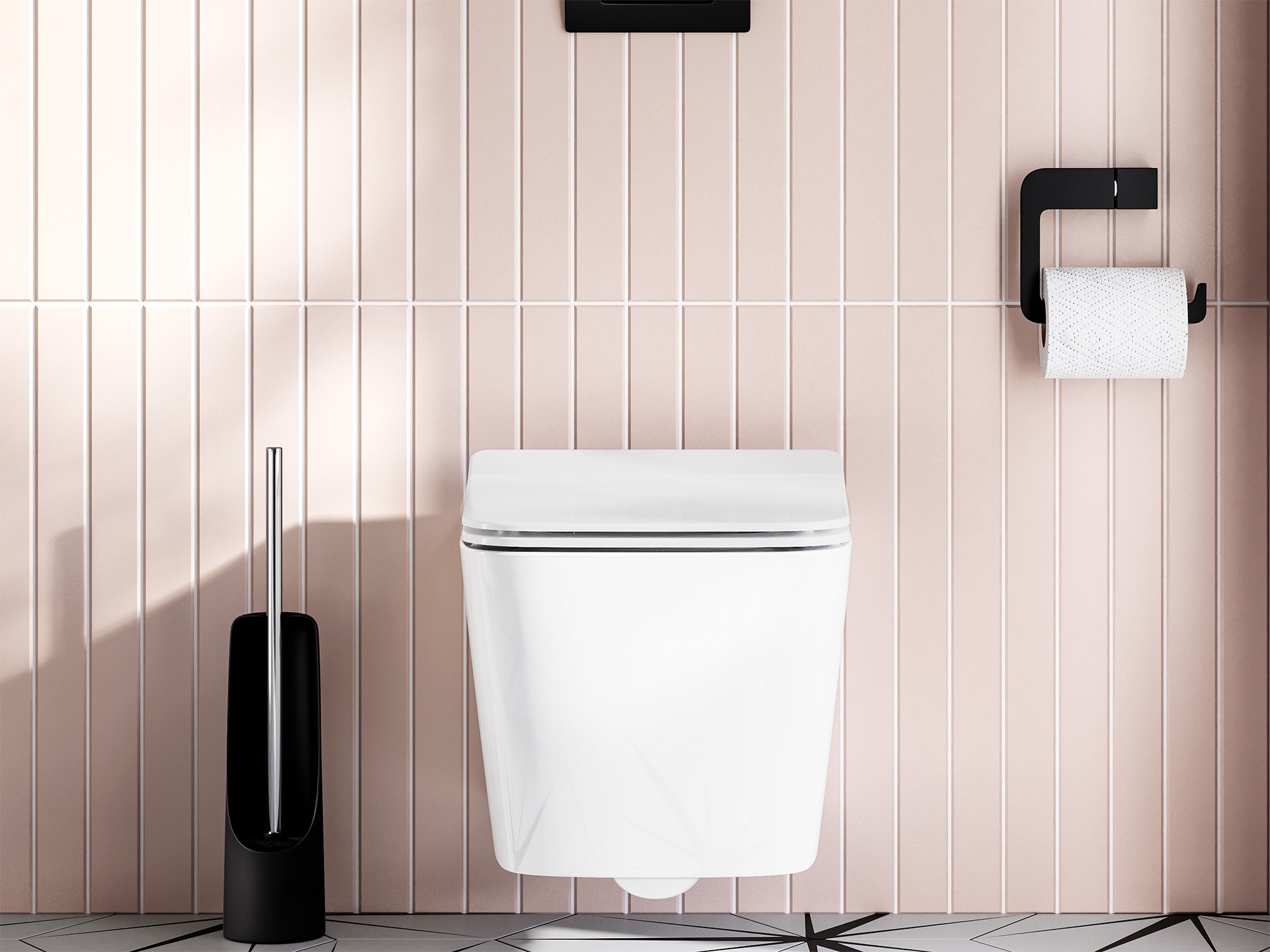
Image credit: Bathroom Mountain
Design
As you can see from the selection of pictures here, back-to-wall and wall-hung toilets are available in all kinds of styles from traditional to ultra modern.
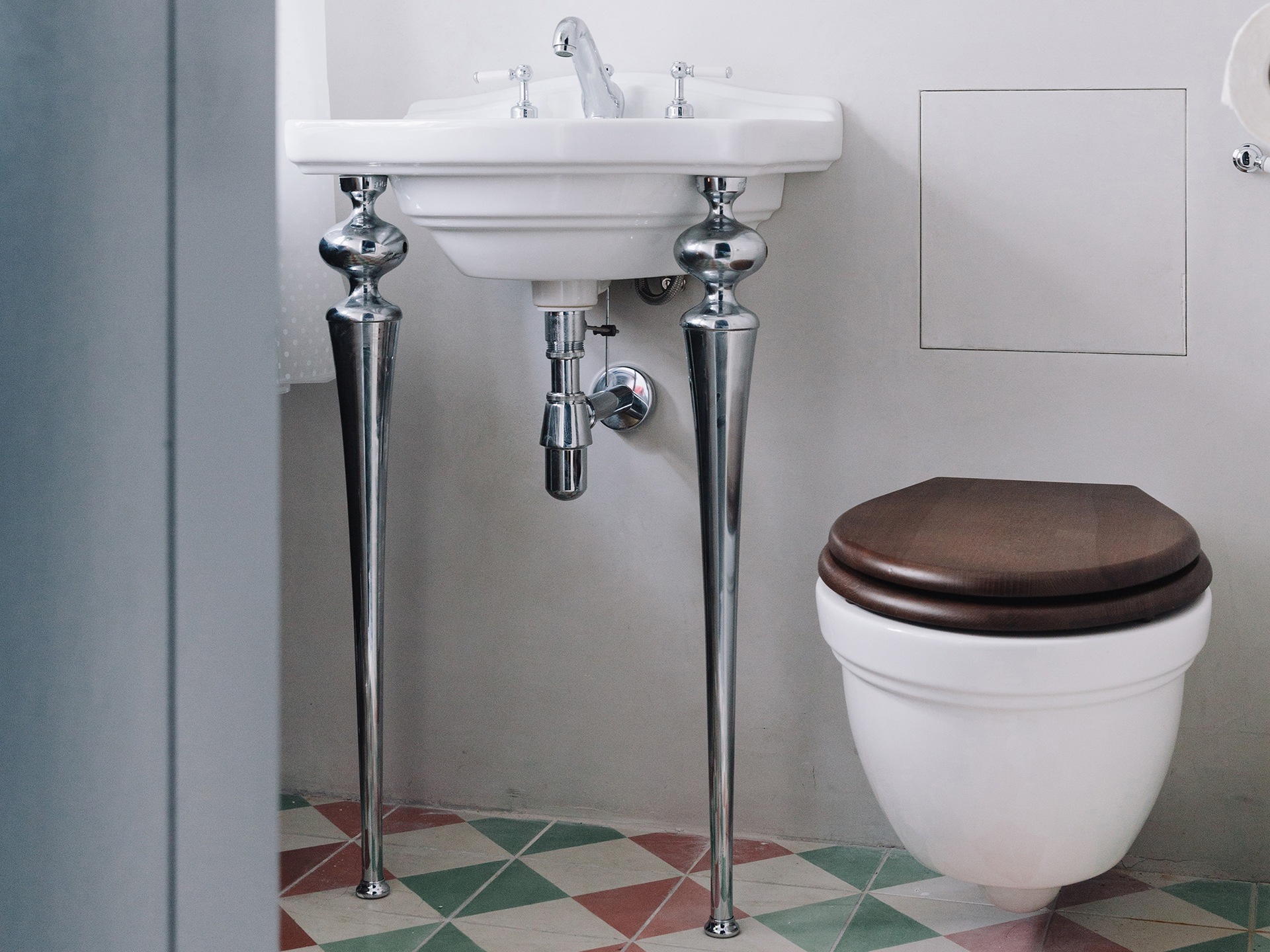
Image credit: The Albion Bathroom Company
Costs
Back-to-wall and wall-hung toilets will cost you more because of the additional installation costs.
And the installation itself is a much bigger job. But, if you are prepared to accept these extra upfront costs, the minimalist look, space-saving and easy-clean qualities will make a back-to-wall or wall-hung toilet the preferred choice for many people.
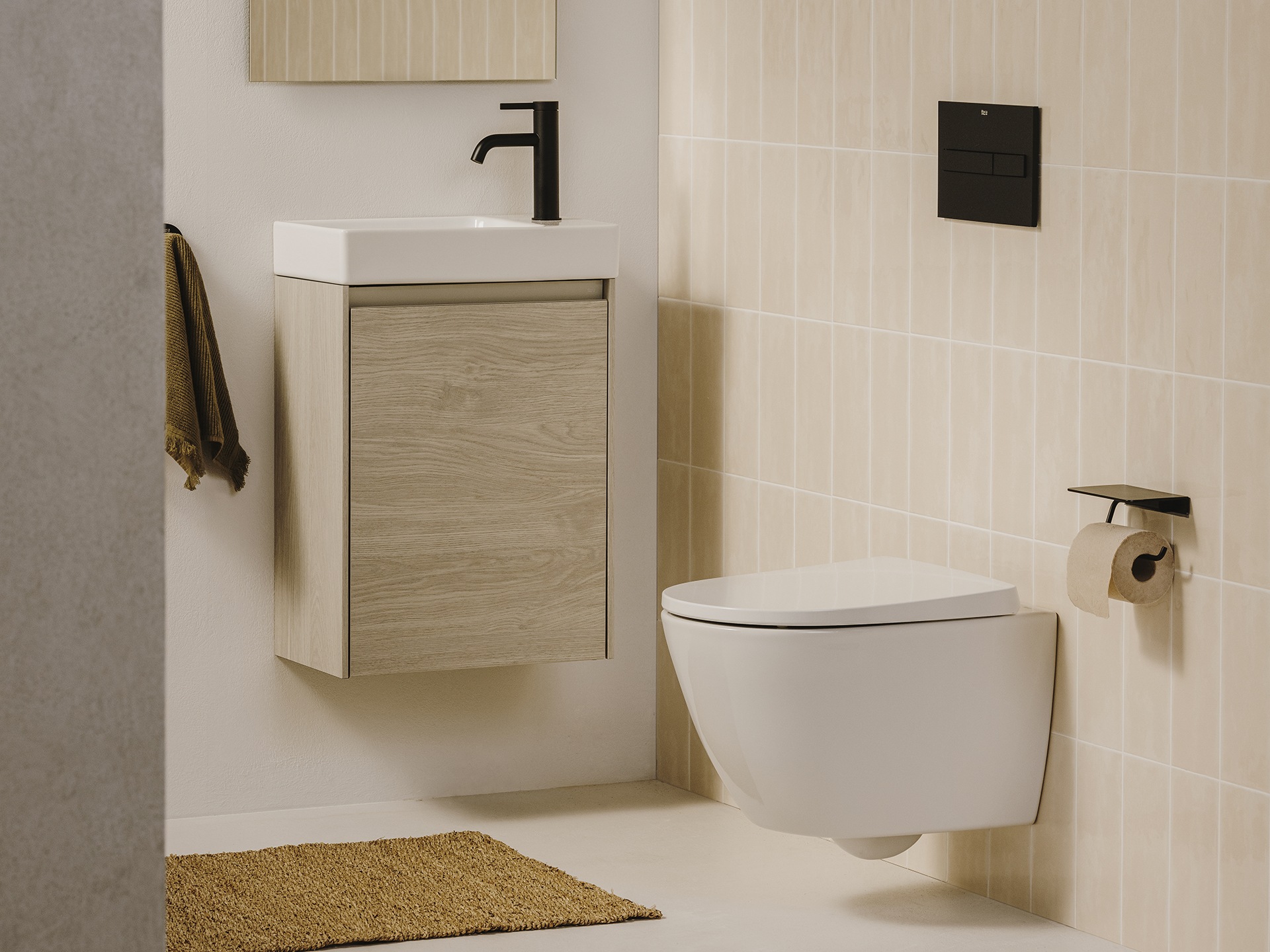
Image credit: Roca, Ona collection

